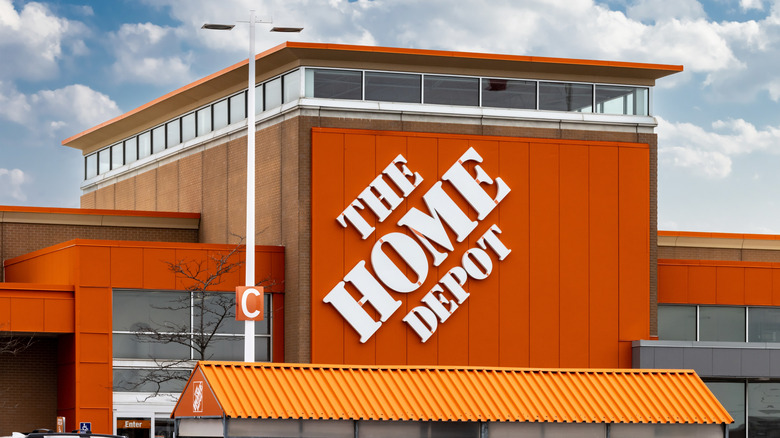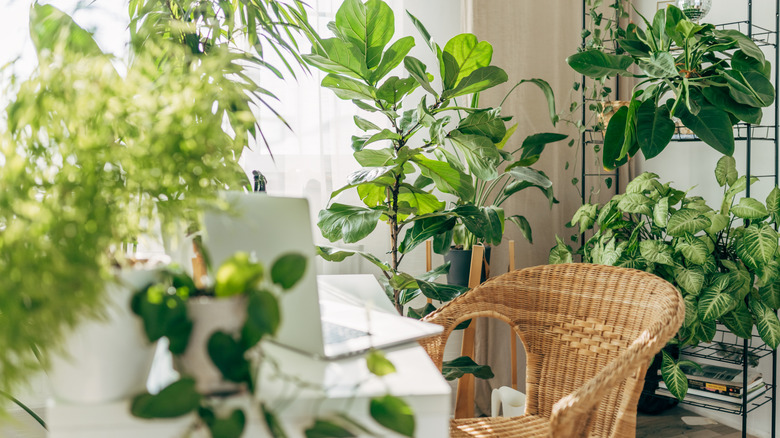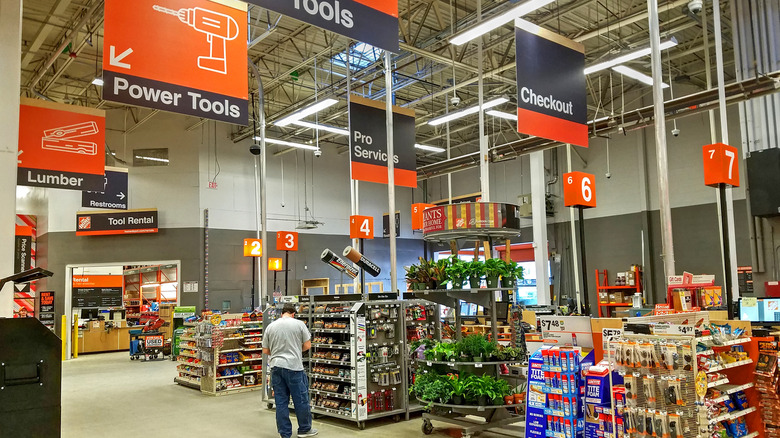Buying Plants At Home Depot Is The Best Budget-Friendly Option For One Reason
The Home Depot is an institution in American home improvement culture. Opened in Atlanta in 1979, the first Home Depot stores offered a sprawling retail setting that allowed homeowners to explore not just products they'd need for a project to spruce up their home, but the advice and expertise of a store employee who knew how to accomplish that task. Today, over 2,300 stores can be found across the United States and two other countries. Growing into a true phenomenon, homeowners everywhere have taken on the mantle of "DIYer" in droves. With the help of the internet, and knowledgeable pros in places like Home Depot, everyday Joes are gaining the confidence and skills they need to deliver on all kinds of projects themselves. Tiling, putting up drywall or doing repairs, and overhauling the landscaping around the house are all within the wheelhouse of the modern homeowner — and renter, too, in many cases.
Landscaping is one area that should receive special attention, however. It's not quite as straightforward as the instructions for building a new closet space or installing a wall-mounted TV. Planting new sod, changing garden beds, and working with other living elements of a project can result in disastrous outcomes. Curb appeal projects are a great way to improve the value of your home, but some of them involve finnicky, live features that can easily be killed off if you deliver them an imbalance of nutrients or don't water them enough. Fortunately, Home Depot is a great place to shop for plants for one important reason.
Houseplants and perennials come with a yearlong replacement guarantee
When buying perennials and houseplants from Home Depot, you'll enjoy a baked in, yearlong "warranty" on the purchase. All perennial, tree, and shrub landscaping plants, and houseplants destined for the interior environment of your home are backed by a yearlong guarantee. About 75% of recreational gardeners reported killing at least one indoor plant a year (in a 2021 survey), with 11.5% reporting at least six "flora-cides" per year. That stacks up to a huge turnover in houseplants, and similar losses may be seen in the outdoor environment too, where home gardeners simply aren't equipped to deal with cold snaps, soil mineral balancing, and moisture retention. Caring for your plants is a full time job, and most people simply don't have the bandwidth to manage that demand.
As long as you keep your receipt, you can bring back a dead plant to your Home Depot location and return it or exchange it for a new one. If you've had it for over 90 days, the store will offer an exchange or store credit, and a shorter timeframe for the demise of your plant allows for the added option to simply get your money back. It's worth noting that a plant's death isn't necessarily your fault, perhaps spurring the policy on. Houseplants in particular are often grown in controlled environments with dedicated heat and lighting that provide optimal conditions, and once the plant reaches your home it's almost certain to be forced to adapt. Not all will survive, no matter what you do.
This offers a solid money saving option when seeking to improve your home
The option to replace dead houseplants for this extended period of time opens up all kinds of possibilities. It stands alongside a number of other clever tricks that can save you money at the store. For those who aren't particularly good at maintaining their landscaping and interior foliage, introducing a revolving door of new plants to your home may be in the cards. So long as you keep your receipts, the outlet may just continue giving you new plants every year to replace any that you've lost along the way.
Alternatively, if you frequently change your mind about the style of your yard or the interior of your home, this might serve as an effective way to tamp down the costs of other projects from time to time. The result can serve as a routine opportunity to increase your home's value on a budget. If your plants begin to wilt before the year is out, bringing them back to build up a bit of store credit rather than replacing them for new ones allows you to reduce the cost of your next power tool purchase or material buy when you take on a different sort of project at home.


